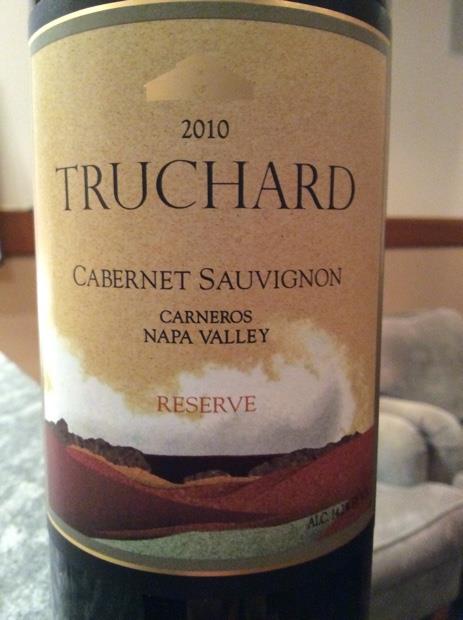
External search
Google (images)
Wine Advocate
Wine Spectator
Burghound
Wine-Searcher
Vintages
2020
2019
2018
2017
2016
2015
2014
2013
2012
2011
2010
2009
2008
2007
2006
2005
2004
2003
2002
2001
Show more
From this producer
Show all wines
All tasting notes
|
| Drinking Windows and Values |
| Drinking window: Drink between 2014 and 2022 (based on 37 user opinions) |
| Community Tasting History |
| Community Tasting Notes (average 86 pts. and median of 86 pts. in 3 notes) - hiding notes with no text | | | Tasted by Tudz Drkl on 1/27/2022: Tasting the Americans (Chez Nous): Very nice. Clear, deep ruby with slight violet edge. Not showing a lot of signs of aging. The nose is dark fruit - blackberries with some light tertiary notes of tobacco and licorice. The mouth was round rich fruit and some round very soft tannins. Not particularly complex but very good wine. (244 views) | | | Tasted by comlaw on 11/3/2016 & rated 85 points: Aerated and decanted for 60 minutes. Very disappointing wine. Moderate tannin but limited fruit. Basically very flat. Would be a pleasant $15 cabernet, but doesn't come close to justifying the price. (705 views) | | | Tasted by RandomCoil on 2/7/2015 & rated 87 points: A lot of oak and decent structure. This is a nice wine with a HORRIBLE QPR. (1058 views) |
| Truchard Producer website
http://img148.imageshack.us/img148/6459/joannnetruchardfr9.jpg
Jo Anne Truchard at the 2006 Hospice du Rhone in Paso Robles, Calif.
The Truchard Estate Vineyard is located in the Carneros region of the Napa Valley. It is 270 acres of hills and valleys, which contain a variety of soils: clay, shale, sandstone, limestone, volcanic ash and rock. The combination of terrain, geology, and marine-moderated temperatures, provides “micro-climates” well suited for wine-growing. Cabernet Sauvignon is planted in several different sites -on steep, southwestern-facing hillsides. The vines range from 3 to 25 years old, and produce wines that are deep in color, dominated by lush flavors of plum, berry, and spice. Cabernet Franc, grown in the “Highlands” area of the vineyard, is blended in to provide additional softness, structure, and complexityCabernet SauvignonCabernet Sauvignon is probably the most famous red wine grape variety on Earth. It is rivaled in this regard only by its Bordeaux stablemate Merlot, and its opposite number in Burgundy, Pinot Noir. From its origins in Bordeaux, Cabernet has successfully spread to almost every winegrowing country in the world. It is now the key grape variety in many first-rate New World wine regions, most notably Napa Valley, Coonawarra and Maipo Valley. Wherever they come from, Cabernet Sauvignon wines always seem to demonstrate a handful of common character traits: deep color, good tannin structure, moderate acidity and aromas of blackcurrant, tomato leaf, dark spices and cedarwood.
Used as frequently in blends as in varietal wines, Cabernet Sauvignon has a large number of common blending partners. Apart from the obvious Merlot and Cabernet Franc, the most prevalent of these are Malbec, Petit Verdot and Carmenere (the ingredients of a classic Bordeaux Blend), Shiraz (in Australia's favorite blend) and in Spain and South America, a Cabernet – Tempranillo blend is now commonplace. Even the bold Tannat-based wines of Madiran are now generally softened with Cabernet SauvignonReserve The Wine News | Wine Country This Week | Wine Lover's PageUSAAmerican wine has been produced since the 1500s, with the first widespread production beginning in New Mexico in 1628. Today, wine production is undertaken in all fifty states, with California producing 84% of all U.S. wine. The continent of North America is home to several native species of grape, including Vitis labrusca, Vitis riparia, Vitis rotundifolia, and Vitis vulpina, but the wine-making industry is based almost entirely on the cultivation of the European Vitis vinifera, which was introduced by European settlers. With more than 1,100,000 acres (4,500 km2) under vine, the United States is the fourth-largest wine producing country in the world, after Italy, Spain, and France.California2021 vintage: "Unlike almost all other areas of the state, the Russian River Valley had higher than normal crops in 2021, which has made for a wine of greater generosity and fruit forwardness than some of its stablemates." - Morgan Twain-Peterson Napa / SonomaSONOMA: The Yorkville Highlands AVA, approved in 1998, is located in the southwestern corner of Mendocino County, between Sonoma County's Alexander Valley to the South and Mendocino County!s Anderson Valley to the North. The region is 25 miles long, roughly in the shape of rectangle and bisected by Highway 128 which runs the length of the AVA. The region!s terrain is hilly and forested, with elevations ranging from 1,078 to 2,442 feet above sea level.
The distinguishing features of the Yorkville Highlands AVA are rocky soils with a high gravel content and the climate, which is cooler than Alexander Valley but warmer than Anderson Valley, and significantly cooler at night than the surrounding areas.CarnerosStraddles the southern ends of Napa & Sonoma Counties. |
|




